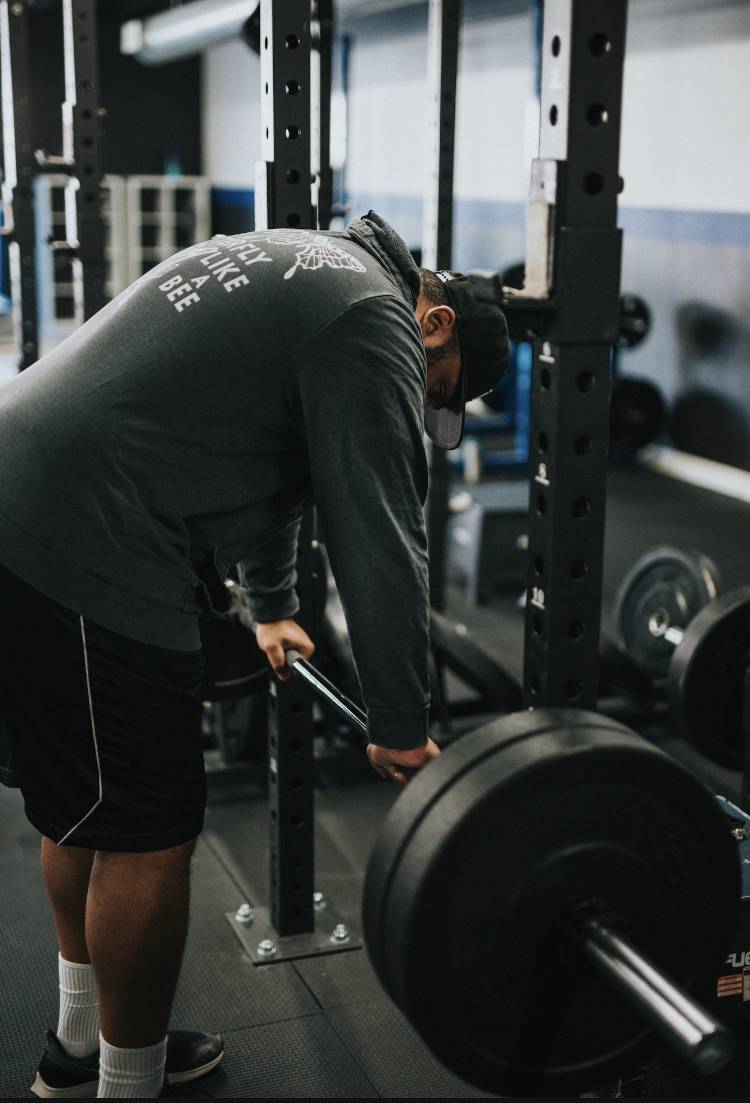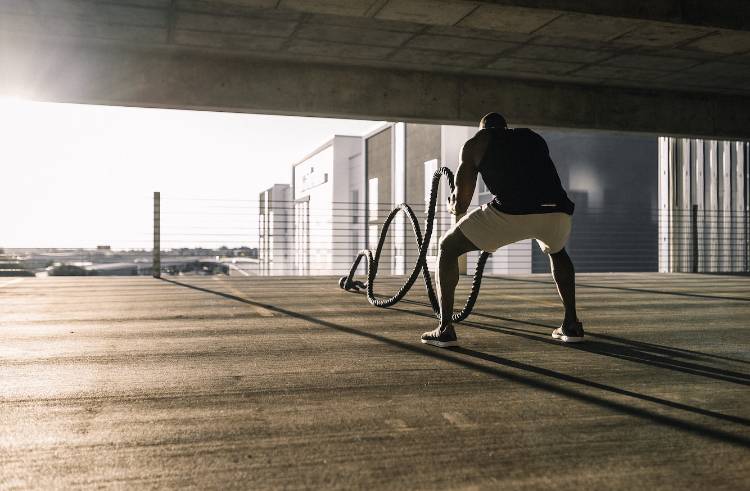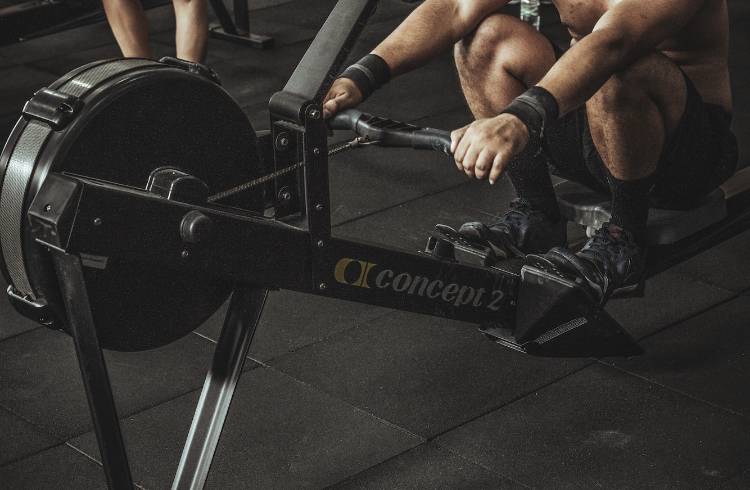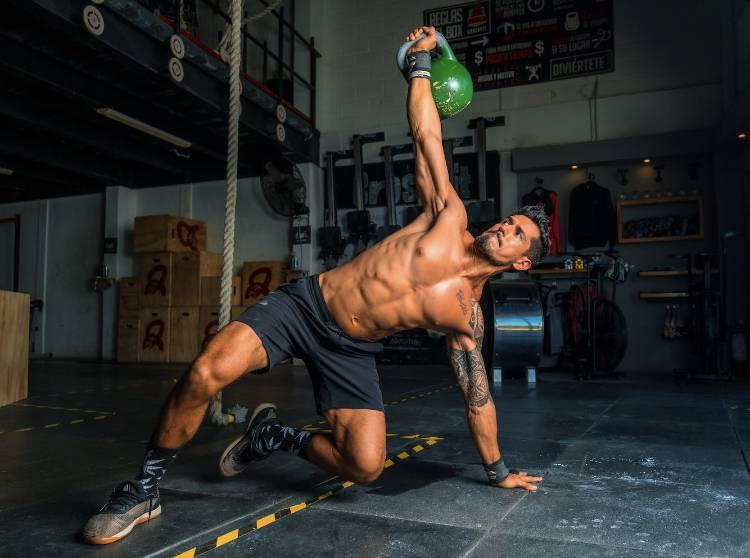Muscle ‘rehab’ is a wellbeing health must. New research from Deep Heat, the joint and muscle care specialists providing a range of thermotherapy topical solutions, has revealed that a staggering 71% of Brits have experienced muscle pain at some point and a scary 50% of the respondents polled in the same study said they have struggled with joint stiffness.
Worryingly though, the same research has found that Brits often ignore this discomfort with 44% admitting that if they had joint or muscle niggles, they would still carry on and continue to go to social occasions. Plus, if the distress was getting worse, 23% say they would still go to an event they had agreed to, regardless.
Can you imagine how much comfortable we’d be if we gave our muscles the proper rehab they needed?
It turns out, listening to our bodies isn’t a forte of us Brits as only 34% admit to doing this as a form of self care with 34% also admitting that they never even think about their muscle health – this includes 46% of 45- to 60-year-olds.
In fact, all age groups seemingly are experiencing muscle and joint distress; two out of five 18- to 29-year-olds have reported an increase in back problems over the previous year with 47% of 18- to 29-year-olds having to rest due to lower leg, ankle, or foot discomfort1. A staggering three-quarters of 30- to 44-year-olds know the warning signs that their body is telling them to slow down or give it some TLC; however, if they were in discomfort, 55% would not miss a work meeting.
Maintaining a stiff upper lip isn’t always advised though. Despite three in 10 survey respondents claiming that painful muscles will eventually heal themselves, 58% do rightly conclude that ignoring muscle issues could lead to future health complications. Injuries need to heal properly to avoid these complications.
 The 101 on muscle rehab: Our muscles go through a lot on a daily basis, and even if you’re sitting still, muscles are working to hold you upright. So, when muscles are overstretched, overused, go through trauma or simply fatigue, muscle rehab is needed to allow healing to occur. After all, everyone wants to be moving comfortably without pain or aches. Muscle rehabilitation can involve particular exercises and movements to allow muscles to repair and become stronger, more flexible and more mobile; and it can involve various therapies including heat therapy, cold therapy, massage and compression. These promote healing and can help to ease swelling. See our 7 hacks on how to care for your muscles and joints, plus if you want to know more on heat therapy and useful muscle rehab exercises from page 2.
The 101 on muscle rehab: Our muscles go through a lot on a daily basis, and even if you’re sitting still, muscles are working to hold you upright. So, when muscles are overstretched, overused, go through trauma or simply fatigue, muscle rehab is needed to allow healing to occur. After all, everyone wants to be moving comfortably without pain or aches. Muscle rehabilitation can involve particular exercises and movements to allow muscles to repair and become stronger, more flexible and more mobile; and it can involve various therapies including heat therapy, cold therapy, massage and compression. These promote healing and can help to ease swelling. See our 7 hacks on how to care for your muscles and joints, plus if you want to know more on heat therapy and useful muscle rehab exercises from page 2.
But what’s causing these muscle injuries?
Physiotherapist and advisor to Deep Heat, Sammy Margo says that there are a number of factors which could be causing muscular discomfort.
Firstly, exercise; over a third of respondents in the Deep Heat survey have had an exercise related injury.
“Although exercise is great for strengthening muscles and joints, we do need to be careful. Warming up and cooling down is vital as it prepares the body for the work it’s about to do, and also winds it down after. Nearly half (43%) of Brits don’t warm up before exercising, while 52% have admitted that they don’t cool down afterwards,” says Sammy Margo.
This is a recipe for disaster, and can lead to painful, long-lasting injuries. Sammy Margo adds: “Often, muscular injuries caused during exercise aren’t dealt with properly, and continuing to exercise causes the injury to reignite.”
However, exercise isn’t the only reason behind muscular injuries. Simple day-to-day movements, such as picking up the shopping, can cause incredibly painful muscle injuries in the back and our knees, for example. When we suffer from a muscular injury, ensuring we heal it properly, with the correct rehab practices, means that the likelihood of the injury coming back, is far less likely.
“Strains and sprains are common occurrences; however, we don’t want to keep getting ourselves injured. We want to get back to living a normal life,” says Personal Trainer Chris Ruxton, who swears by Deep Heat as his go to muscle re-hab essential who reiterates how important it is that we live an active life; walking, exercising, and staying mobile.
Sedentary lifestyles can also wreak havoc on our muscle health. More than four in 10 survey respondents feel that the increase in working from home reduces activity levels across the day with 78% of Brits feeling that they should be doing more exercise and six in 10 revealing that they don’t know how much exercise per week the government and NHS recommends.
 Sammy Margo explains: “The NHS recommends that we do at least 150 minutes of moderate intensity activity a week or 75 minutes of vigorous intensity activity a week,” says Sammy Margo, adding that it’s also advised to do strengthening activities that work all the major muscle groups (legs, hips, back, abdomen, chest, shoulders, and arms) on at least two days a week.
Sammy Margo explains: “The NHS recommends that we do at least 150 minutes of moderate intensity activity a week or 75 minutes of vigorous intensity activity a week,” says Sammy Margo, adding that it’s also advised to do strengthening activities that work all the major muscle groups (legs, hips, back, abdomen, chest, shoulders, and arms) on at least two days a week.
“Sitting still for too long, or limiting movement, can cause muscles to tense up, which can lead to aches. Habitual inactivity leads to a slew of health issues known collectively as hypokinetic diseases. Heat therapy, such as the Deep Heat Muscle Massage Roll-on Lotion offers a convenient, non-medicinal way to ease muscle discomfort,” she adds.
Weight gain is also an issue for muscle and joint discomfort.
“Weight gain and obesity put extra pressure on the joints,” says Sammy Margo. “So it’s important to maintain a healthy weight by eating a balanced diet and incorporating plenty of healthy movement into your life.”
It is possible to ease muscle discomfort. Check into muscle rehab: How to care for muscle and joints aches
 #1. Muscle Re-hab With Heat Therapy: Don’t overlook the power of heat! Although so many Brits are ignoring their muscular injuries, an impressive 52% do believe that heat therapy can support muscle rehab and long-term recovery from an injury. In fact, 43% have tried a topical heat therapy in the past for back or hip pain, with 57% continuing to use it.
#1. Muscle Re-hab With Heat Therapy: Don’t overlook the power of heat! Although so many Brits are ignoring their muscular injuries, an impressive 52% do believe that heat therapy can support muscle rehab and long-term recovery from an injury. In fact, 43% have tried a topical heat therapy in the past for back or hip pain, with 57% continuing to use it.
Personal Trainer Chris Ruxton recommends Deep Heat Muscle Massage Roll-on Lotion as a useful heat therapy tool that can be used anywhere, anytime, particularly following an injury – where muscle fibres have knitted together incorrectly.
“This is my muscle-rehab essential as it’s a convenient, non-medicinal way to ease muscle discomfort topically. Use it daily to ease and release knots in shoulders, legs, and backs so you are more comfortable; use before exercise to loosen and soften muscles, so they move more easily; and use it to rehab soft tissue muscle, to help realign muscle fibres and break down adhesions and scar tissue,” explains Chris Ruxton.
Added to this, Chris Ruxton recommends the Deep Heat Pain Relief Heat Patch. “I use this underneath my clothes. It’s a long-lasting, adhesive patch, which is non-medicinal, comfortable, and odourless and sticks well!”
#2. Warm up…: With the Deep Heat research discovering how a vast number of Brits neglect to warm up and cool down before and after exercise, it’s time to make this a priority, in a bid to reduce muscle and joint distress.
“An effective warm-up is essential because it loosens muscles, increases blood flow, and fires up muscles and tendons and makes the most of your work-out. It also helps minimise the risk of injuries,” says Chris Ruxton, who adds that a warm-up should also focus on aerobic activity, not stretches.
“Save stretching for your cool down, after exercise,” he adds. Chris Ruxton reveals that if you’re carrying an injury, have problems with muscular aches and discomfort or you’re doing a quick work-out between work calls, use the Deep Heat Muscle Massage Roll-on Lotion for a fast-track warm-up.
“Use the roller-ball action to massage calves, thighs, upper arms and shoulders and the sites of any particularly tight or achey muscles, then let the warming ingredients go to work.”
#3…and cool down: This is where stretching comes in, a key contributor to ache-free muscles and joints. “While muscles are still warm, gentle stretches will help release any build-up of lactic acid and increase flexibility. Over time, regular stretching will increase strength, mobility, and balance,” advises Chris Ruxton.
He recommends focusing on major muscles such as the shoulders, upper back, lower back, pelvis, hips, and legs, and pay more attention to muscles which are sore, or tight. “Hold each stretch for 15 to 60 seconds, depending on your level of fitness, and during each stretch, gently try to lengthen muscles. Avoid bouncing as this could lead to minor, or major, muscle tears and damage.”
 Chris Ruxton also recommends massaging the backs of calf muscles, muscles behind the knees and undersoles of your feet with Deep Freeze Glide-on Gel. Deep Freeze Glide-on Gel provides scientifically proven cooling and
Chris Ruxton also recommends massaging the backs of calf muscles, muscles behind the knees and undersoles of your feet with Deep Freeze Glide-on Gel. Deep Freeze Glide-on Gel provides scientifically proven cooling and
soothing for backs, necks, shoulders, legs, and feet and works just like ice. Cooling therapy can decrease blood flow and may help calm minor aches in muscles and joints. As a result, Deep Freeze Glide-on Gel provides fast-acting cooling and non-medicinal soothing relief for minor aches in muscles and joints in a convenient and mess-free roll-on format. It can also be used alongside oral analgesics.
#4. Massage: Almost two thirds of Brits correctly think that massage can support recovery and muscle rehab from an injury with 27% already factoring massages into their life as a means of caring for their muscles.
Chris Ruxton says that it’s simple to massage aching muscles at home, yourself. “If you don’t have the means of getting a professional massage, try using a foam roller at home. These come in smooth or ridged varieties, and after just 10 minutes of rolling the tight area under the roller, you should feel the muscles start to ease.”
Chris Ruxton adds: “When you’re sitting down at a desk or table, why not try rolling a massage ball under your feet to ease tightness in the foot, which can also help muscles and joints throughout the entirety of the lower leg.”
#5. Check your posture:
Previous Deep Heat research found that 50% of people work from home using a laptop whilst sitting on a sofa or armchair and 33% work in bed! Neither of these scenarios will be doing muscles and joints any good. Sammy Margo says that it’s important to sit upright on a comfortable chair with feet flat on the floor. Forearms should rest at a comfortable height on a table with your laptop or screen at eye level, so as to avoid any neck pain.
#6. Muscle rehab exercises: Here are a few muscle rehab exercise examples from Sammy Margo, all designed to help muscles to repair and become stronger, more flexible, and more mobile.
- Bird dog – for recovery from back pain
Start on all fours with your wrists directly under your shoulders and knees under your hips. Keeping your back and core engaged, extend your left arm out in front of you at the same time as extending your right leg out behind you. Hold for 10 seconds, then return to the start and repeat with the right arm and the left leg. Do this 3 times on each side.
- Back extension – to aid with lower back pain
Start lying down on the ground, face down. Keep your arms down by your side. Engage your back, stay facing down and slowly lift your upper back and feet off the floor. Hold this for 10 seconds, then lower back down to the start. Repeat 4 times.
- Shoulder flexion – to help with shoulder injury recovery
Lie on your back with your arms by your side and your knees bent with feet flat on the floor. Clasp your hands together in front of your body, and keeping your arms straight, bring them overhead. Pause, then return to the start. Go for 5 reps.
Glute bridge – for back, hamstrings and glutes
Lie back on the floor with knees bent and feet flat on the floor. Keeping your arms by your side, slowly lift your hips off the ground, until your thighs and upper body form one straight line. Pause, then lower back down. Aim for 10 reps.
#7. Dealing With Muscle Discomfort. Like many, Sammy Margo and Chris Ruxton are huge fans of the Deep Heat product range. Here’s a fast product summary to the Deep Heat range:
- Deep Heat Pain Relief Spray – an easy-to use heat therapy spray. Helps to relieve pain in the muscles, tendons, joints or bones, lower back, and thigh pain, sprains, or strains. Deep Heat generates penetrating warmth in aching, injured and sore muscles. Heat therapy helps to increase blood supply to relax aching and overstretched muscles – re-oxygenating the tissues to help stimulate the natural healing process. Contains Methyl Salicylate. Always read the label.
- Deep Heat Heat Rub – a rub that provides targeted pain relief and can be used before or after exercise. Plus, it helps with stiffness including back and rheumatic pain, sciatica, fibrositis, sprains and chilblains. Penetrating heat therapy through a rub helps to increase blood supply to relax and soothe aching, injured and sore muscles. Contains Methyl Salicylate. Always read the label.
Images
Andrew Valdivia
Karsten Winegeart
Victor Freitas
Alonso Reyes
Anastase Maragos